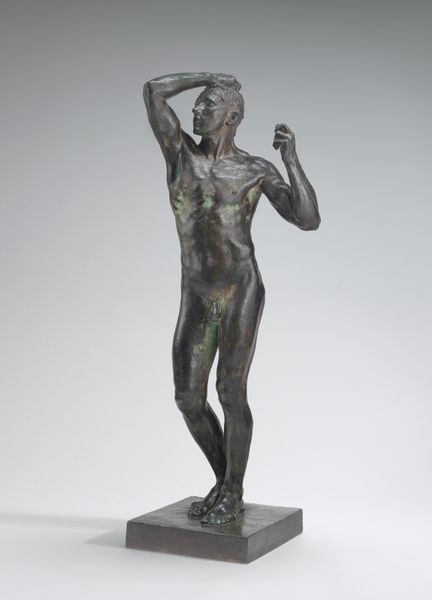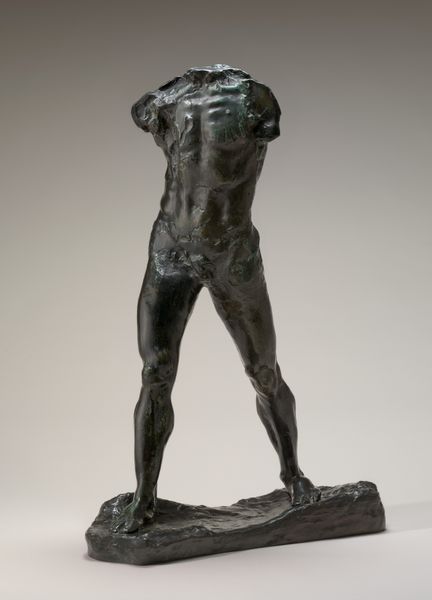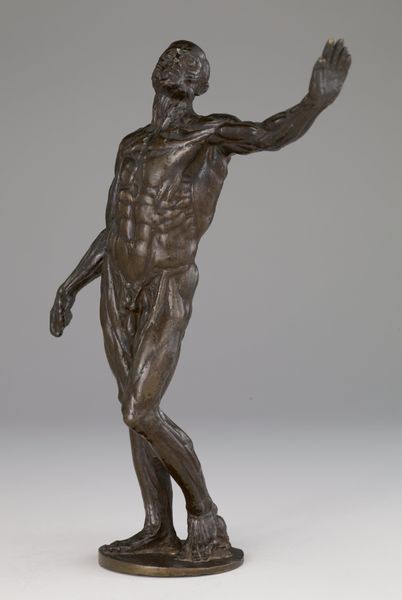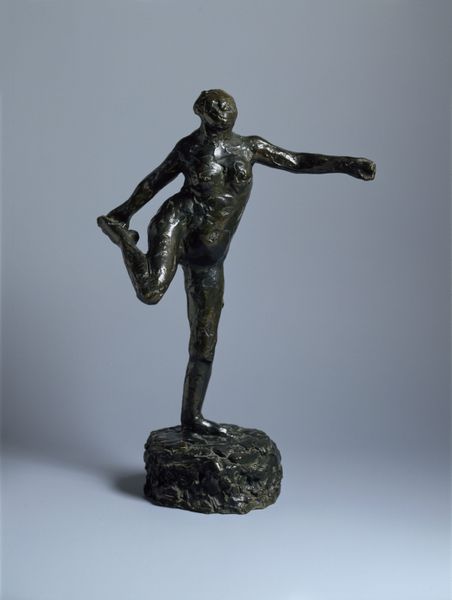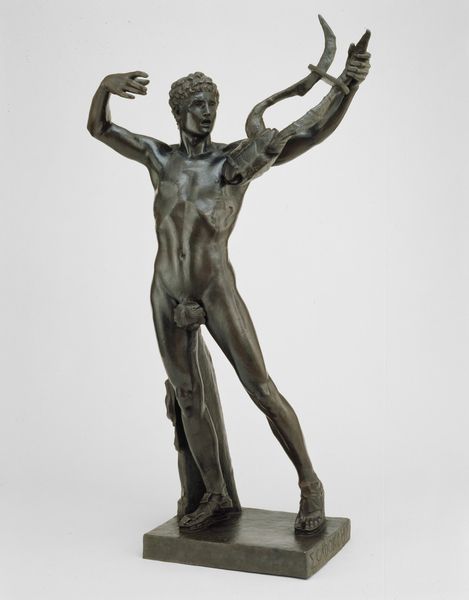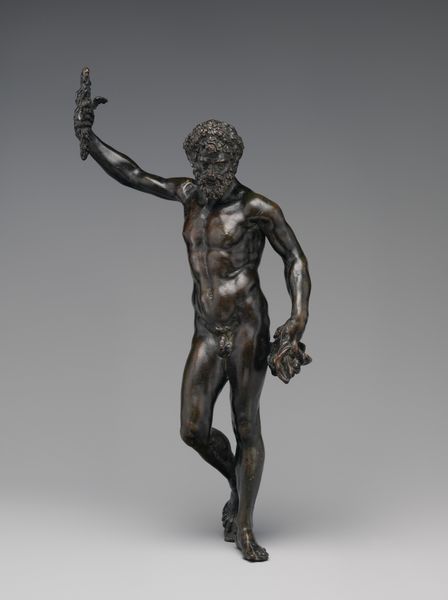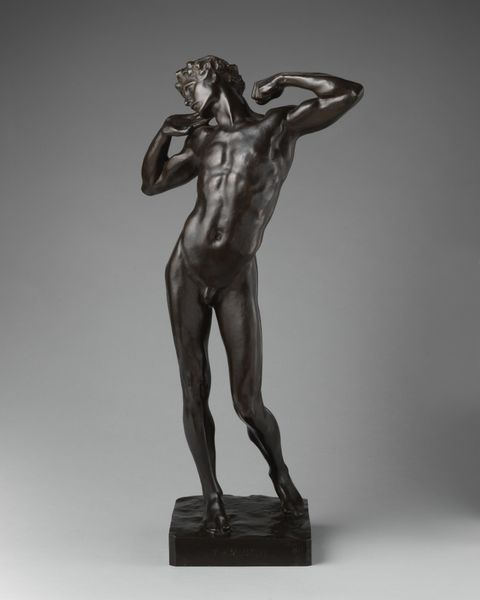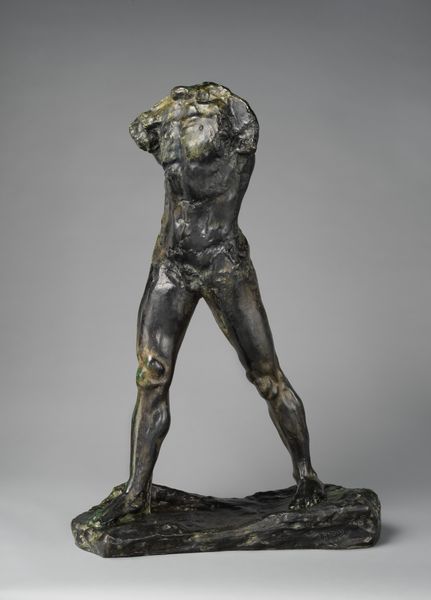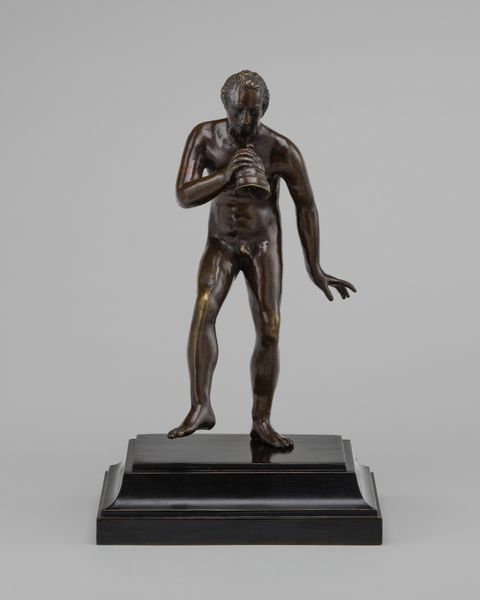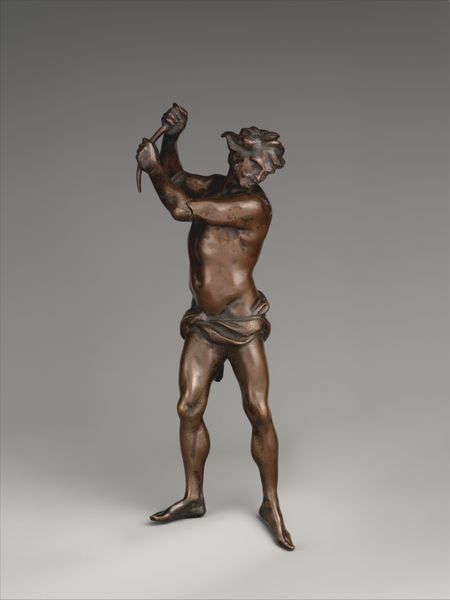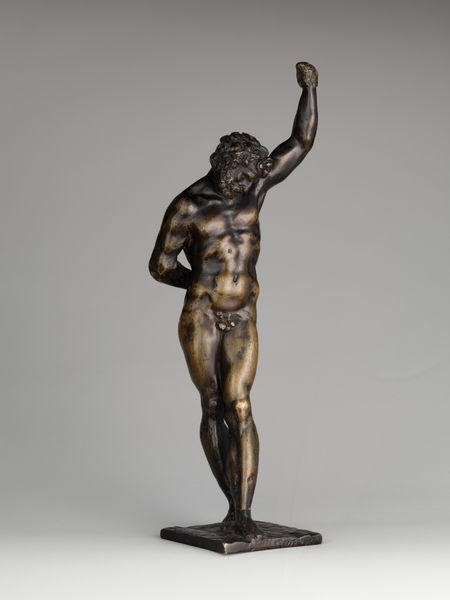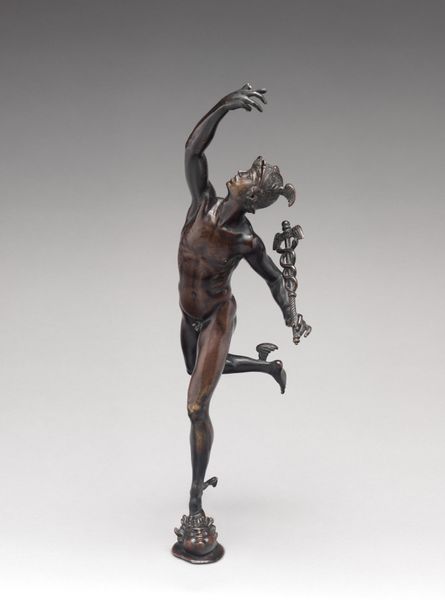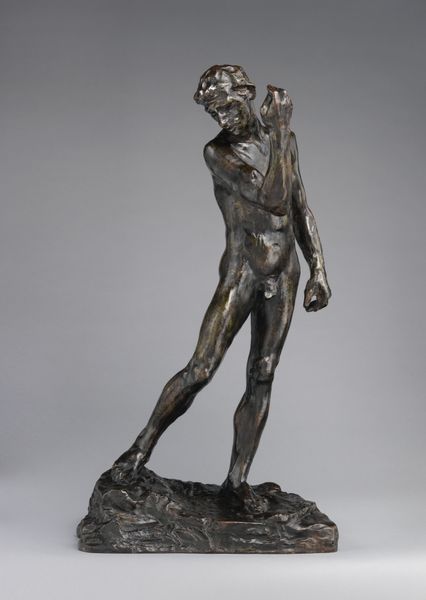
bronze, sculpture
#
bronze
#
figuration
#
sculpture
#
decorative-art
#
nude
Dimensions: Height: 9 3/4 in. (24.8 cm)
Copyright: Public Domain
Editor: This is "Ecorché," a bronze sculpture from around 1761 to 1799. It depicts a nude male figure with the skin removed, revealing the musculature underneath. The level of detail is striking and, frankly, a little unsettling. How would you interpret this piece? Curator: Well, beyond the immediately obvious anatomical study, consider the socio-economic context of bronze casting. Bronze, while durable, necessitates considerable resources - skilled labor, materials, specialized workshops. The decision to render this figure in bronze elevates it beyond a mere medical model; it imbues the écorché with status, reflecting the value placed on scientific inquiry by wealthy patrons. Do you notice the particular attention given to certain muscle groups over others? Editor: I do; the muscles in the arms and legs are much more defined than those in the torso. Curator: Exactly. This differential treatment of musculature perhaps speaks to contemporary understandings of labor and physical exertion. Who would have been the audience for such a piece? Anatomists? Artists? Or perhaps wealthy collectors interested in the science of the body as a kind of status symbol? Editor: That's a perspective I hadn't considered. I was too focused on the purely artistic or scientific aspects. So, the bronze material itself is significant, telling us about the patronage and potential social standing associated with the artwork? Curator: Precisely. It asks us to look beyond the immediate visual impact and delve into the conditions of its production and consumption. Art isn’t created in a vacuum, but within systems of material exchange and social power. Editor: It changes how I see the piece, understanding it not just as an artistic achievement, but also as a reflection of the resources and labor involved in its creation. Thanks, this has really opened my eyes. Curator: Likewise. Analyzing art through a material lens unveils hidden narratives, demonstrating that even the most aesthetic objects are rooted in practical considerations and societal values.
Comments
No comments
Be the first to comment and join the conversation on the ultimate creative platform.
